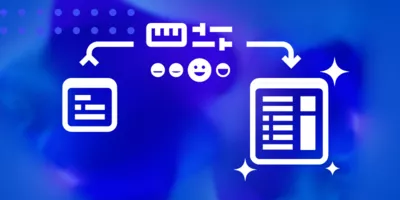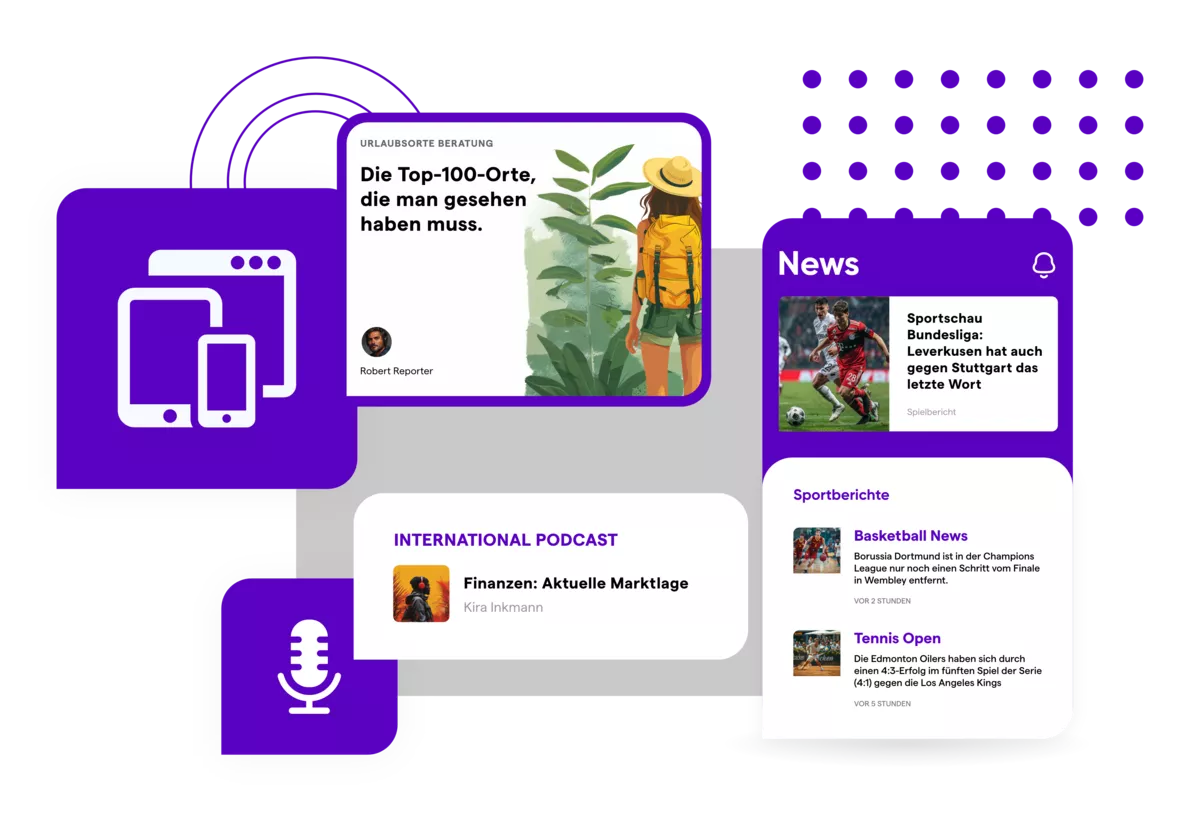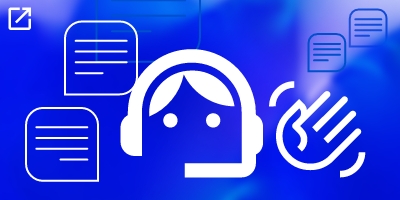- AI Solutions
- Industries
- AI Projects
- Knowledge
- About us
Inside a Chatbot’s Mind: How AI Powers Conversations
Chatbots are virtual services that interact with users in natural language. Modern chat programmes make use of artificial intelligence – in particular, methods such as Retrieval-Augmented Generation (RAG) – which enable them to deliver precise and contextually relevant answers, even to complex queries.
Chatbots are regarded as a prime example of Natural Language Processing – the processing of natural language at several levels. Smart virtual dialogue assistants combine linguistic and AI-based methods: they first analyse user requests and then generate tailored, linguistically coherent responses. RAG models selectively access only the knowledge they are provided with. This information is fed into the response generation process as needed, reducing the risk of hallucinations – a common issue with open, internet-trained language models.
Important: Chatbots do not simply “work out of the box”. Before going live, they undergo a dedicated training phase. Data and AI specialists equip them with relevant content, rules and example dialogues – the foundation for effective retrieval. Once in operation, the bot continues to learn: with every request it refines its ability to identify, retrieve and linguistically process relevant information – steadily improving its success rate.
What effects does the implementation of chatbots bring?
On many levels, chatbots can sustainably optimise business processes by simplifying the exchange of information and speeding up workflows.
Their biggest advantage lies in their permanent availability. Users can receive a direct response to their query 24 hours a day, seven days a week – regardless of location and without waiting times. Chatbots not only have unlimited capacity; they also remain impartial, regardless of the nature of the query or the person asking it. Especially in sensitive areas, bots therefore provide a low-threshold option for getting in touch.
The benefits are not limited to users. Within companies, job roles and task profiles also change. Chatbots relieve staff from dealing with repetitive requests and standardised responses. Freed-up resources enable employees to focus on more complex and creative tasks.
Moreover, chatbots provide valuable insights into user behaviour and preferences. By evaluating incoming queries, an intelligent feedback system emerges, highlighting where communication can be prioritised and optimised.
Another important feature of modern chatbot systems is their ability to process context and personalise interactions. Powerful bots remember past interactions, recognise user intents and adapt their answers dynamically to the flow of conversation and to individual profiles. This creates a dialogic experience that comes closer to human communication. In addition, by using RAG, chatbots are not limited to pre-set rules or training data but can also draw on up-to-date external knowledge sources in real time – for example from product databases, help centres or specialist articles. This vastly broadens their application areas: from customer support and internal knowledge systems to advice in complex decision-making situations.
Chatbots increase the efficiency of internal business communication
Customer service chatbots on sales-oriented websites are no longer a novelty.
1. Internal chatbots – rethinking knowledge transfer and employee communication
More and more companies are deploying chatbots not only in customer contact but also to support internal communication. Particularly in organisations with complex processes and extensive internal knowledge, virtual assistants play a key role. By providing employees with a single point of contact for questions about internal processes or regulations, access to necessary knowledge is significantly shortened. Chatbots are especially valuable in companies where large volumes of knowledge need to be organised and transferred.
Typical areas of application:
-
Answering questions about processes, tools and internal workflows
-
Supporting the onboarding of new employees
-
Accompanying company-wide change (e.g. new software, policies)
-
Relieving HR, IT and Legal departments through automated first-level support
Thanks to RAG technology, internal chatbots can target relevant content in policies, wikis or manuals and deliver context-aware answers – 24/7, in natural language. Digitally savvy generations such as Millennials, who are accustomed to messenger-style communication, find text-based dialogue especially intuitive and useful.
2. Customer communication assistant – efficiency in digital customer service
In digital customer service – especially in e-commerce – chatbots are increasingly replacing traditional support channels such as hotlines or e-mails. They answer questions quickly and reliably before, during and after purchase.
As virtual advisers, chatbots can handle up to 80 per cent of support volume, easing the burden on other channels such as e-mail or telephone hotlines.
Typical tasks of a customer service chatbot:
-
Advising on product selection
-
Providing information on delivery, returns, payments
-
Handling frequent queries (e.g. “Where is my parcel?”)
-
Escalating to human support for more complex issues
By combining AI with RAG, these bots go beyond rule-based systems and can also draw on dynamic external sources such as product databases or FAQs. The results:
-
Fewer first-level support requests
-
Shorter waiting times
-
Round-the-clock availability
3. Research assistant – smart support for complex queries
Chatbots are capable of much more than answering simple questions. As research assistance systems, they are used wherever large information repositories need to be accessed efficiently – for example in specialist publishing houses, law firms or knowledge management systems in large organisations.
Possible use cases:
-
Legal research (laws, rulings, commentaries)
-
Specialist journalism and academia (studies, sources, reports)
-
Technical documentation (product or safety information)
-
Internal knowledge databases
Thanks to RAG, these chatbots can extract and summarise information from long, unstructured documents in real time. Instead of sifting through PDFs, users simply ask a question – the bot provides a relevant answer, complete with source reference.
4. Shopping assistant – AI-powered advice in e-commerce
In online retail, customer experience has become the decisive factor. Chatbots acting as shopping assistants add real value – not only for customers but also for retailers.
A good shopping assistant offers:
-
Personalised advice based on individual needs (“Which lawnmower is suitable for my garden?”)
-
Comparison of product variants
-
Integration of reviews, manuals and videos
-
Context-sensitive recommendations by accessing relevant sources via RAG
In addition, such assistants can:
-
Target cart abandoners (e.g. via chat reminders or e-mails)
-
Personalise product descriptions based on user behaviour or search intent
The result is highly individualised shopping experiences that not only boost conversion rates but also foster customer loyalty and differentiation in competitive markets.
A particularly chatbot-friendly group of employees are the so-called Millennials. Accustomed to text-based digital exchanges through private messenger use, they find virtual dialogue programmes especially intuitive. Millennials expect to be able to ask questions at any time in their job and receive answers immediately – making the digital communication medium a forerunner of a changing working world.
References & PDF
Chatbots: Development and Applications
Artificial Intelligence and Chatbots in Technical Communication – A Primer
Are AI Chatbots Replacing Search Engines? A 2-Year Data Study on Web Traffic Trends




